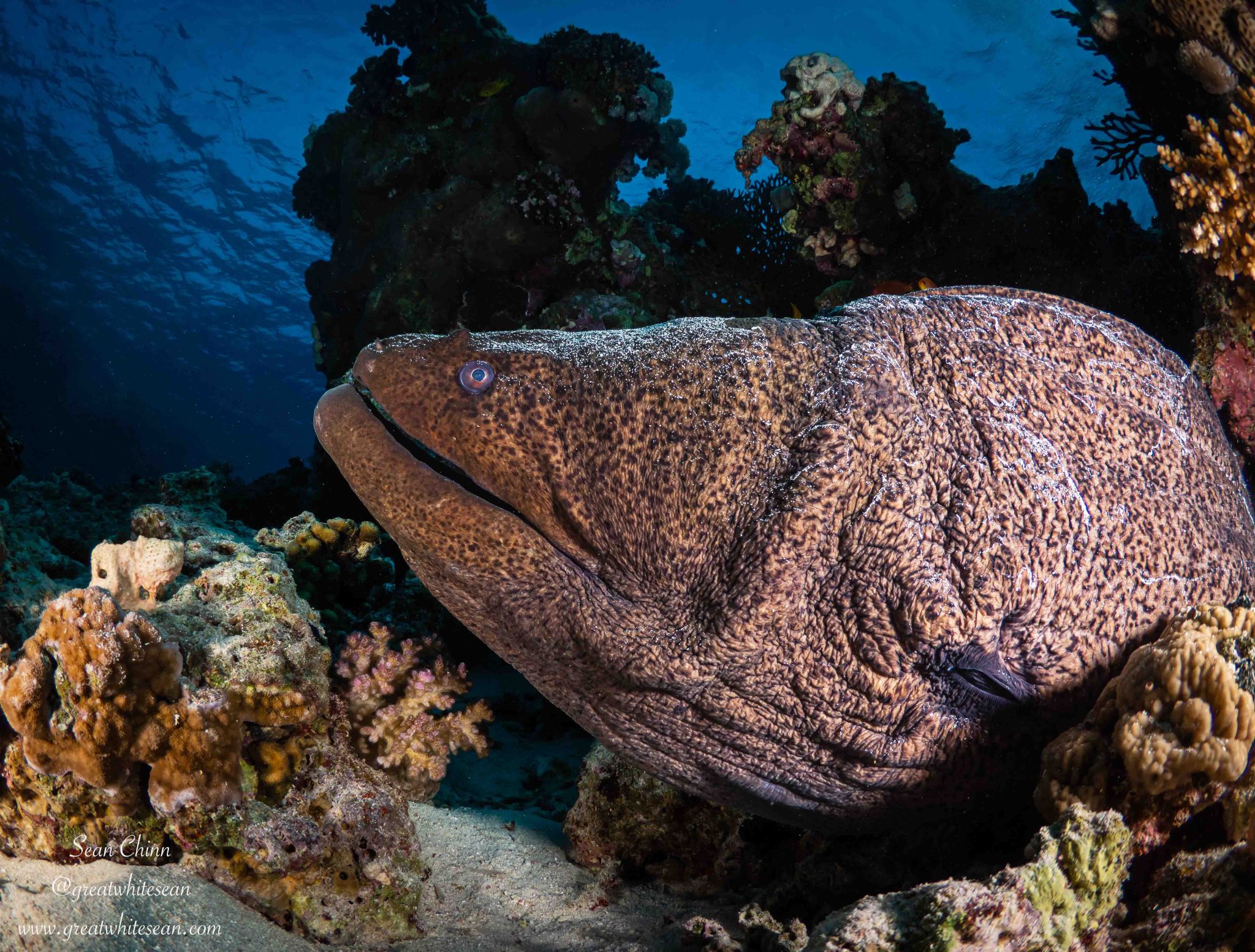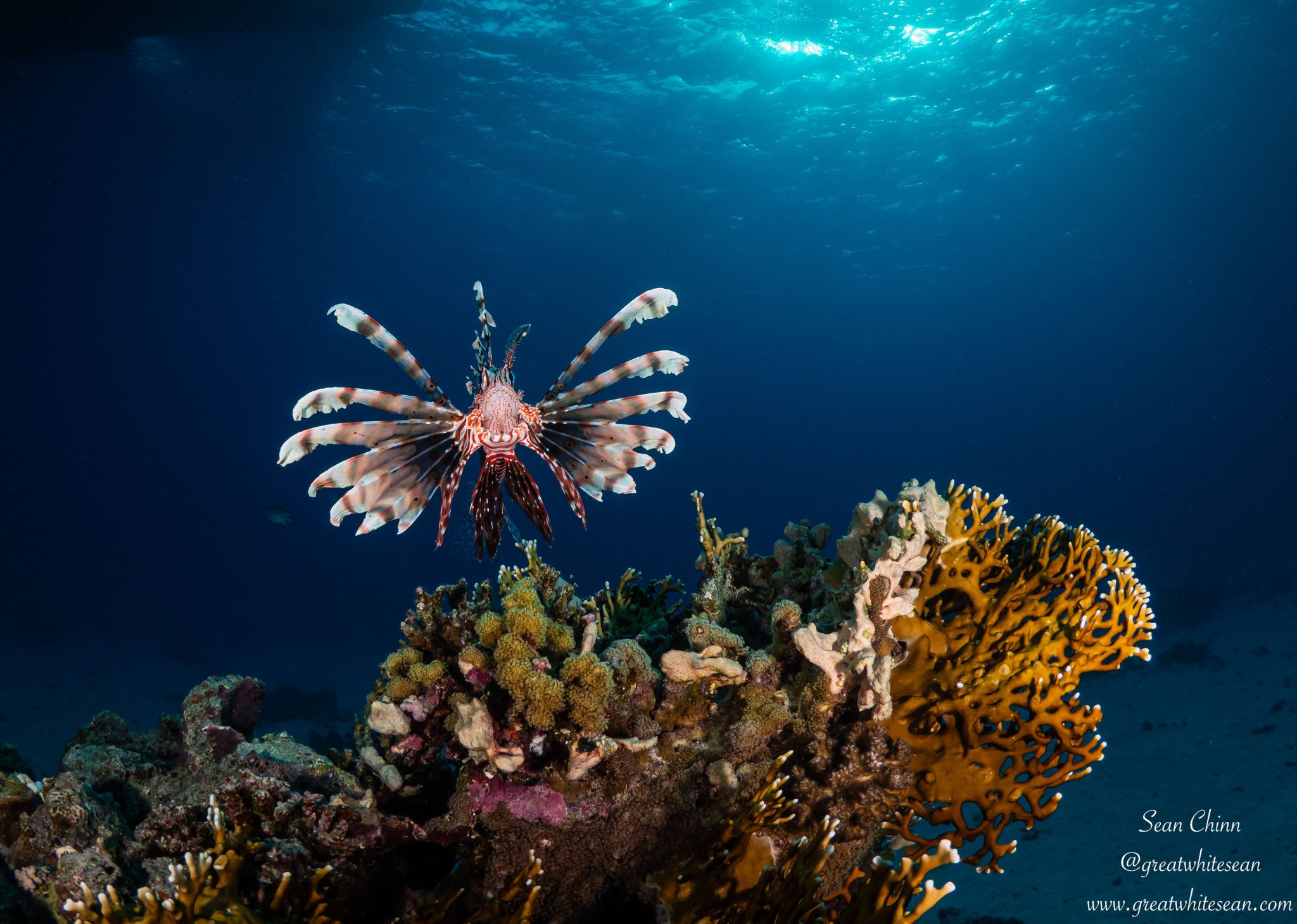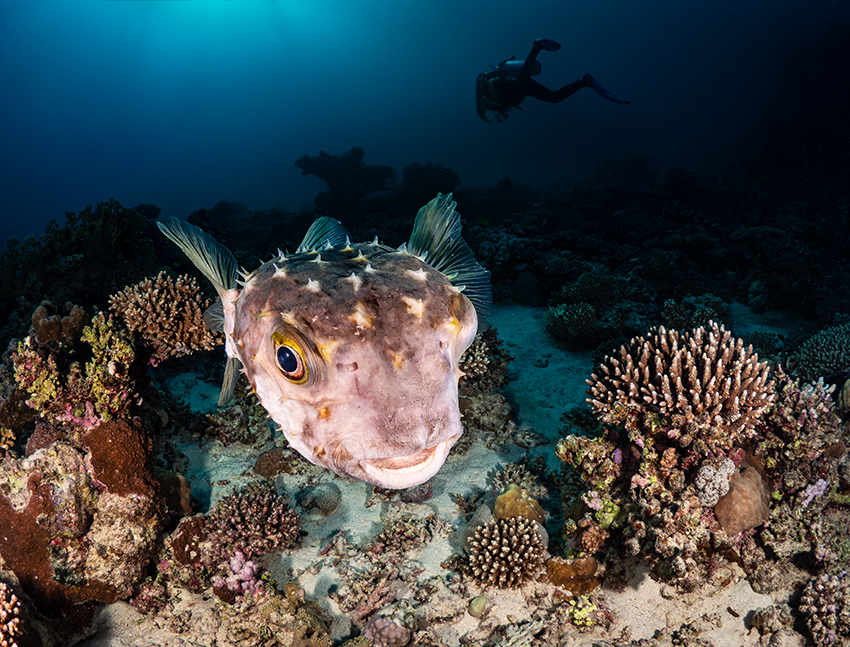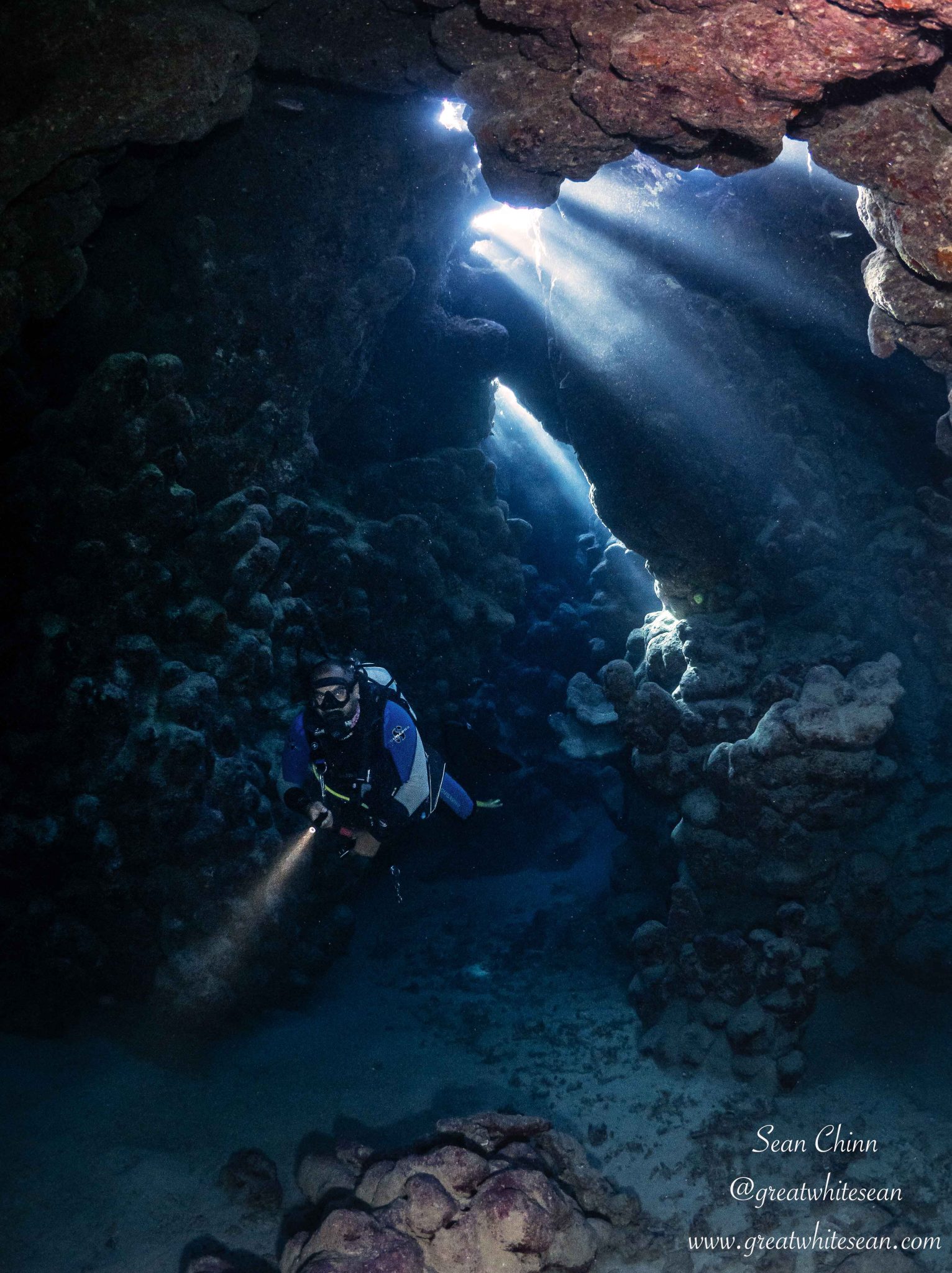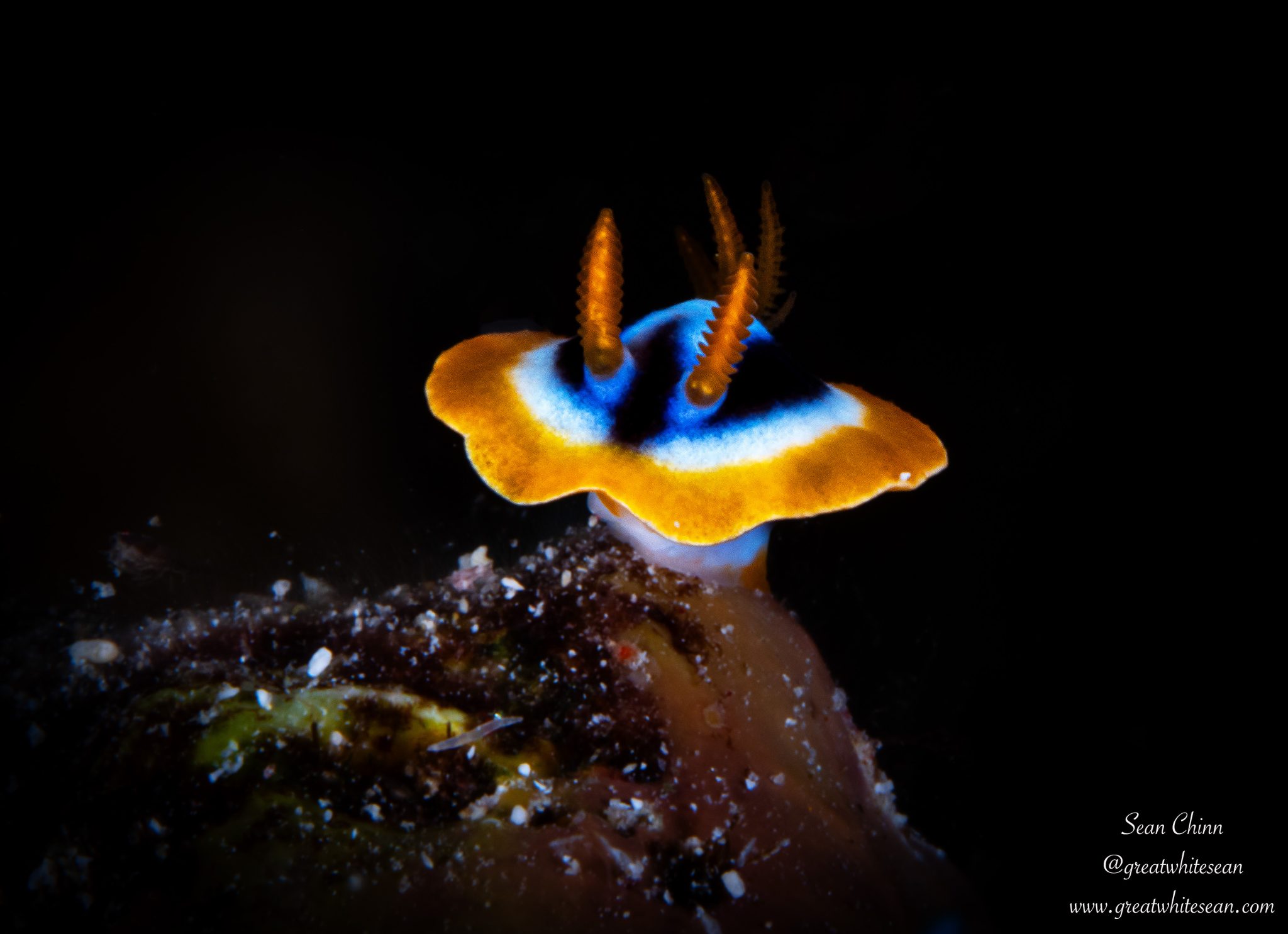Blogs
‘Simply the Best’ – Quintessential Red Sea Diving
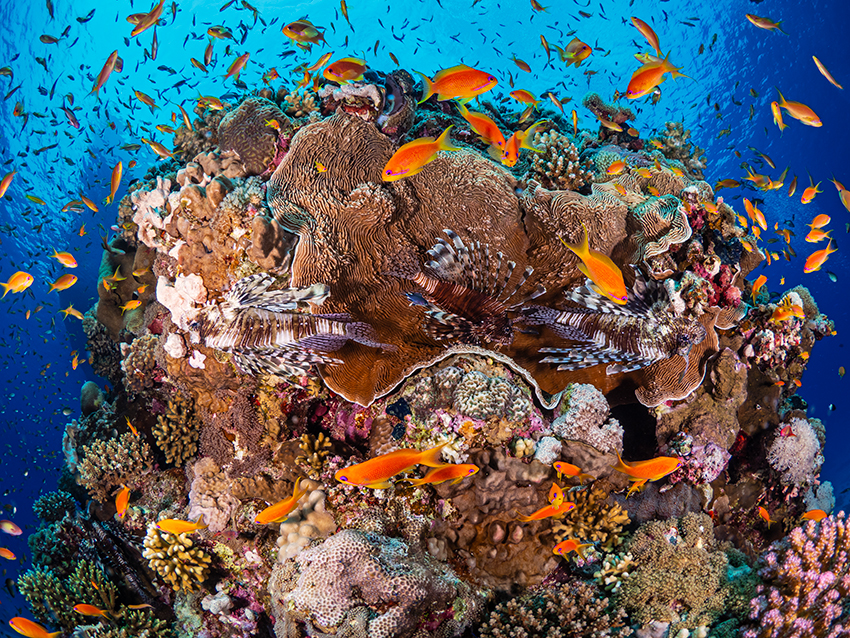
A ‘Simply the Best’ itinerary with Scuba Travel is the perfect blend of relaxing diving, coupled with a more adrenalin fuelled adventure. By now, I should hope you have read my previous blog, Simply the Best – a shark lover’s dream!!! Detailing the amazing adventure we had at the offshore reefs as part of the itinerary. If you haven’t read it, then you can find it here. Like any good book, there’s always a beginning, middle and end, and that is how this trip went. The offshore adventure in the middle was straddled either side by some super relaxing but super enjoyable quintessential Red Sea reef diving closer to shore, a perfect support cast for Brothers, Daedalus and Elphinstone.
The trip started with a couple of check-dives at Gota Abu Ramada. A night dive was also on the itinerary, but the weather wasn’t playing ball, so we made the journey to Brothers earlier to get a good mooring spot. Ultimately, it was our decision based off the captains advise and when nature has its own plans, you have to go with the experts. It was a shame to miss a night dive, as I always love night dives, but the 2 dives at Gota Abu Ramada were a great introduction to the week and couldn’t have been any easier to break me back into diving after a 5-month hiatus. we cruised the sandy bottom, exploring all the coral out-crops full of life. I always make a beeline for the coral pinnacles and play a game of spot the lionfish resting amongst them during the day. They’re so full of life and the anthias surrounding them are mesmerising to watch.
Somewhat surprisingly, I only saw one blue spotted stingray during the 2 dives here. On the sandy bottom dives, I normally spot them a lot more frequently. However, on these particular dives, the giant morays were the stars of the show, with one peppered moray also joining the list. A number of them were seen during the 2 dives and one was seen snaking its way along the sand before putting the brakes on in front of me and hypnotising me with its movements. As we came to the end of the diving here, I saw the biggest moray eel I’ve ever seen, which is saying something, as I’ve seen a lot in my diving life. Its girth was incredible. The dives here finished up with a couple of swimming lionfish and a large scorpion fish on the sand. You can’t get anymore Red Sea than this start to the trip.
After the amazing few days on the offshore reefs, we made our way back towards land one dive early to avoid Elphintone’s crowds and get a dive in at Abu Dabab 2. I remember this dive and the shallow cave/cavern exploration from 2 years previously. Such a fun dive with a twist from the usual. We started the dive at the wreck of the ‘Heaven One’ at only 14/15 metres, and the dive doesn’t get any deeper than that really. Although there is not much left of the wreck, it does provide some nooks and crannies for critters to hide out. I soon saw my second blue spotted stingray of the trip (I do love them), before heading to the entrance of the cave system on the reef’s edge. While I didn’t spend as long exploring them this time, it was a great change from the usual, and with a couple of tight squeezes to contend with, I felt like a cave explorer for a short moment, and the shards of light piercing through the reef were awe-inspiring.
After the one dive at Abu Dabab, we moved onto Ras Torombi for more stunning reefs and sandy bottom heaven, starting with an afternoon dive before our one and only night dive of the trip. There was so much beautiful coral on this dive, with the stunning hard coral along the larger reef walls in the shallows and the intense colours of the soft coral on the pinnacles. This was another shallow dive, only around 15m maximum, with the friendliest porcupine puffer fish I’ve ever encountered; it was also huge – one of the biggest I’ve seen.
I switched to macro for the night dive in the hope I’d find some cool little critters. Some of the group managed to find a couple of octopus that put on an amazing show for them. While I was sad to miss out on one of my favourite critter species, I did manage to find the smallest nudibranch I’ve ever seen in the Red Sea – it was only the size of my little fingernail. That was it for the really small though and it was more a night dive for lionfish, blue spotted stingrays and moray eels. I was very happy to get a night dive in, I always love them.
Unfortunately the weather didn’t get better like we hoped. In fact, it got worse for our last night’s crossing to return to Hurghada. It meant it took a lot longer than usual and we missed out on catching up on that dive we missed at the start of the week. That’s nature for you though, and you have to respect it and stay safe. So our last day finished with 2 dives; visiting Abu Ramada Island and Small Giftun. Abu Ramada was my favourite inshore dive of the trip. A super relaxed bimble along the sandy bottom, with an array of life to marvel at and photograph. A large scorpionfish started the adventure, but it was a rather large titan triggerfish that stole the show. I’m starting to repeat myself here, but it was another first for me – for a triggerfish to be so calm and allow many a photo to be taken. It was so transfixed on grinding away at the coral that it was unmoved at our presence – even coming right up to my lens at times – and it was my choice to leave him, rather than him leave me after I got the shots. More coral pinnacles spotting the lionfish and a relaxed blue spotted stingray finished up an excitingly peaceful dive.
Small Giftun gave us one last chance at hitting some depth and changing it up from the sandy bottoms of inshore diving, even if it was only for the first 10 minutes of the dive. Dropping down the wall to around 30m, we marvelled at the pristine gorgonian fan corals that thrive in the area; single fan corals dwarfing you as you get close, with anthias framing them as they dart around the different fans. A pleasure to see such healthy coral, before venturing around the corner of the island and hitting the sandy bottom and coral out-crops for one last time of the trip. Scorpionfish, blue spotted stingrays, a crocodile fish and moray eels gave us a great send off. With a number of small schools of Red Sea banner fish hugging the wall as we shallowed up, a swimming scorpionfish startling me as I watched the banner fish providing the last hurrah of the trip. All too soon it was the final safety stop and back onboard to clean our kit and dry it out.
What a fantastic week I had exploring the Red Sea from Hurghada onboard M/Y Tranquility on Scuba Travel’s ‘Simply the Best’ itinerary – the perfect mix of adventurous diving with some bigger marine life and the relaxing shallow sandy bottom reefs. I really got my shark fix for the year with the abundance of oceanic whitetip sharks that greeted us on a number of dives. They really are one of my favourites, and the Red Sea continues to be a beautiful destination to get underwater. I’ll be back!!!
For more information about diving in the Red Sea:
+44 (0)1483 411590
Blogs
Alonissos: The complete diving destination (Part 1)

In June we were incredibly fortunate to be invited to dive in Alonissos, a small Greek Island in the Sporades island chain located in the North Aegean Sea. While I have long been a big fan of the Greek Islands as a great holiday destination, I had not had the opportunity to do any diving on previous visits and Mike and I were extremely excited to see what Alonissos had to offer both above and below the surface!

The Sporades are easily accessible via the airport in Skiathos (the first island in the chain), which is served by Jet2 flights from all major UK airports from May through October. Numerous ferries and charter boats make island hopping from Skiathos Town a breeze. After an hour boat ride, the picturesque port of Patitiri was a wonderful introduction to Alonissos, where we were met by our gracious hosts Kostas of Albedo Travel and Dias of Alonissos Triton Dive Center. Mike and I were delighted to be staying at the Paradise Hotel, aptly named for its stunning views over the sea and great location for walking to the waterfront.

Alonissos is beautifully situated in the National Marine Park of Alonissos and the Northern Sporades, the largest marine protected area in Europe. The surrounding seas offer fabulous marine life, including incredibly rare species such as the Mediterranean monk seal. They boast deep walls covered in gorgonians and sponges, stunning topography with caverns, swimthroughs and pinnacles, and the first accessible ancient shipwreck from 500BC!

In locations where historical sites have been reported, the waters are largely restricted, but with collaboration between government, underwater archeologists and dive centres, incredible underwater museums are being created for a truly unique diving experience. Alonissos is home to the first of these, the Ancient Shipwreck of Peristera Accessible Underwater Archeological Site. The chance to dive into history (along with reports of healthy reef life and amazing underwater topography) meant Mike and I were keen to get in the water.

Our introduction to the diving around Alonissos was at the Agios Georgios Pinnacles, in the channel between Alonissos and Skopelos. This fantastic site was named “The Chimney,’ and proved to have a huge amount to see. We got to a decent depth here (over 25m), and marvelled at a colourful reef wall with a wonderful swim through whose rocky walls were absolutely covered with life. As well as brilliant topography there was no shortage of macro life here. We saw numerous nudibranchs, five different species in total. The second dive at Mourtias reef nearby was a shallower dive along a nice wall with lots of crevices. Several moray eels and grouper called this site home. We enjoyed looking in the crevices for lobster and smaller benthic life, such as cup corals and tunicates.

Our itinerary allowed us two dives a day with afternoons left to explore the island with our hire car and evenings to enjoy the famous Greek hospitality. This proved to be a lovely mix of in-water and land based diversions.

The next days diving to the Gorgonian Gardens and Triton’s Cave was to be even better! These two stunning sites are nothing short of fabulous. The Gorgonian Gardens was a deep wall near to the Agios Georgios islands. The ever-present currents in this deep channel meant that the sea life was amazing … the namesake Gorgonian sea fans dotted the wall at a depth of 30 to 50 meters, getting ever larger the deeper we went. Above 30m was by no means less beautiful, with sponges, corals, scorpionfish, moray eels and some rare and colourful nudibranchs.

The second shallower dive of the day was to Triton’s Cave or the Cavern of Skopelos, on the east side of that island. The spectacular rock formations had wild striations both above and below the water making a truly epic topography. The cavern entrance was at 14m, and big enough for a buddy pair, winding up to 6m and passing two beautiful windows out into the blue. Emerging from the cavern, the light at the shallower depths and the incredible rock formations made for a fantastic gentle swimming safety stop and we all surfaced by the boat with massive grins.

Check out our next blog :Alonissos: The complete diving destination (Part 2)” to hear about our amazing dive on the 2500 year old Peristera Wreck!
Thanks to:
Alonissos Triton Dive Center https://bestdivingingreece.com/
Albedo Travel https://alonissosholidays.com/activities/
Paradise Hotel https://paradise-hotel.gr/
Alonissos Municipality https://alonissos.gr/en/
Blogs
Mamma Mia! Diving Skopelos (Part 2)

Our second days dive itinerary was to the famous Christoforos wreck! This is arguably the best dive in Skopelos and though only open to divers with deep diving experience, this 83m long wreck is well worth the visit.
The Christoforos sits in 43 meters of water with the deck at 32 to 35 meters. A 30m dive can give an impressive view of the wreck, though such a large wreck needs a few dives to truly do it justice. Given its ideal location just a 2 minute boat ride from the dive centre dock it is an excellent first dive of the day. The sheltered site is also diveable in all but the absolute worst weather so although deep, the water is usually clear with little to no current making it a very pleasant dive. The site is superb for technical diving and a great training site for the Tec 40 and 45 programs, offered by Skopelos Dive Center.

The Christoforos wreck was originally a collier ship built in 1950 at Grangemouth shipyard under the name “Thomas Hardie”. In 1976 she joined the Greek merchant fleet as “Christoforos”. On the 2nd of October 1983 the Christoforos was carrying 2600 tonnes of cement from Volos to Piraeus Port. During the voyage the weather turned, resulting in the ship developing a 7 degree list, whereby she changed course for safe anchorage at Panormos, Skopelos. The ship reached Panormos at 16:00 with a list of 17 degrees and water ingress to No. 1 hull. Though attempts were made to right the vessel, the crew were ordered to abandon ship at 22:00. The captain, lieutenant and the quartermaster remained to try and save the ship, but had to abandon the attempt themselves and the Christoforos finally sank at 05:30 on 3rd October 1983. She now sits upright in 43 meters of water less than 200m from shore in Panormos.

Diving has only been allowed here since 2018, so the wreck is very well preserved and a real treat to dive. Permission to dive here was granted by the authorities after lots of incredibly hard work by the Skopelos Dive Center staff. Having a fantastic wreck in such an amazing location and in excellent condition is a real privilege.

Of all the sites in Skopelos this was the site Mike and I were most keen to experience. Having kitted up and zipped across the bay to the mooring, we left the surface and followed the descent line until the wreck emerged spectacularly from the blue at 15m. She is a big and beautiful wreck, sitting as though calmly continuing her journey along the seabed. With most of her original features still intact there were points of interest everywhere, including the anchors, winches, ships telegraphs, the wheel and RDF antenna.

We found that aquatic life had colonised the ship, with schools of fish, electric blue nudibranchs, a large moray eel and the resident scorpionfish lurking inside the bridge. The Christoforos was truly a stunning wreck and despite maximising our time at depth we eventually had to say our goodbyes and begin the slow and steady return to the surface.

After a superb morning dive we had the afternoon to do a little sightseeing of the island, with a trip to the church of Agios Ioannis Kastri made famous by the blockbuster movie “Mamma Mia!”. Mike and I spent a happy afternoon pootling around in our little hire car before meeting up with Lina from Skopelos Dive Center. An underwater archeologist as well as a dive professional, Lina had offered to show us a rather special attraction, the Christoforos shipwreck Digital Spot public information and awareness centre.

A fantastic initiative made possible from the collaboration of the government and hard work of the staff at Skopelos Dive Center is the “Digital Spot” in Agnontas port. This information center has a number of displays on the history of the Christoforos wreck, the process by which the wreck was allowed to be opened to the public for diving tourism, other sites of historical interest in the area, a video of the wreck and the best bit, a virtual reality dry dive experience! The beauty of the VR system is that non diving members of the family can see what you have seen on the wreck, or you can see areas that you may not have explored during the dive due to time or depth limitations. It was a truly immersive experience and a great addition to the dive itself.

After a wonderful day we celebrated our last evening on the island with an exquisite meal in Skopelos Town with fabulous views over the town and bay, washed down with the excellent local wine. The lamb with lemon and potatoes was a meal which I could happily eat every day for the rest of my life!

Skopelos is an island that truly has it all. The diving is excellent, the landscape is beautiful with plenty of non diving activities, the locals friendly and the food and drink superb. Given how accessible it is as a holiday destination it has avoided becoming overcrowded and even in peak season offers a fun yet relaxing atmosphere. We highly recommend giving Skopelos a visit. We will certainly be back again!
Thanks to:
Municipality of Skopelos (https://skopelos.com/)
Skopelos Dive Center (https://sporadesdiving.gr/)
Ionia Hotel (https://www.ioniahotel.gr/en)
Dolphin of Skopelos (https://dolphinofskopelos.com/)
Ta Kymata restaurant (@takymata)
The Muses restaurant (https://www.facebook.com/TheMussesMousses/)
Aktaiov resturant (https://skopelos.com/listings/aktaion-taverna/)
-

 Blogs2 months ago
Blogs2 months agoDiving With… Nico, Ocean Earth Travels, Indonesia
-

 News1 month ago
News1 month agoMurex Bangka Announce New Oceanfront Cottages & Beachfront Dining
-

 Blogs2 months ago
Blogs2 months agoA new idea in freediving from RAID
-

 Marine Life & Conservation1 month ago
Marine Life & Conservation1 month agoIceland issue millionaire whale hunter a licence to murder 128 vulnerable fin whales
-

 Marine Life & Conservation2 months ago
Marine Life & Conservation2 months agoThe Shark Trust Great Shark Snapshot is back
-

 News3 months ago
News3 months agoCharting New Waters; NovoScuba Goes Global with the Launch of their Revolutionary Dive Training Agency!
-

 Gear News1 month ago
Gear News1 month agoNew Suunto Ocean – a dive computer and GPS sports watch in one for adventures below and above the surface
-

 Marine Life & Conservation Blogs2 months ago
Marine Life & Conservation Blogs2 months agoBook Review: Plankton


